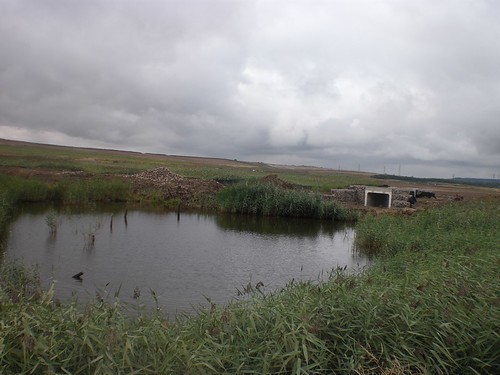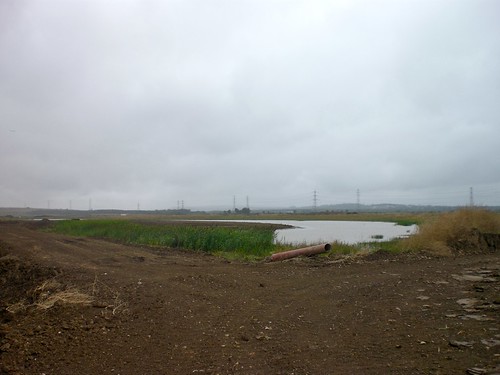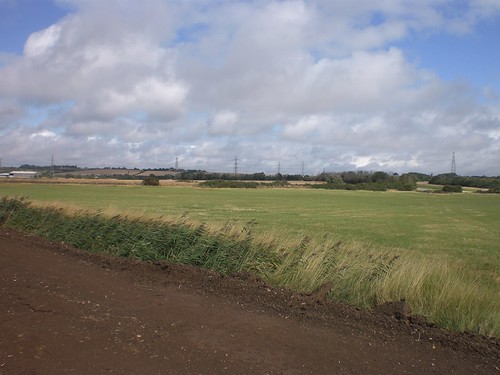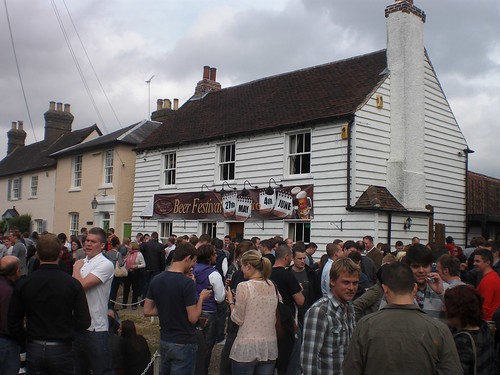 |
| A Fresh/Brackish Water Lagoon |
 |
| One end of the large fresh/brackish water lagoon. The earth ridge to the left of the picture will be removed when the Island at the end is finished. |
The construction of a nature reserve of this size (270 Hectare) is essentially a case of two things - shifting earth and managing water. Whilst the land was originally salt marsh, when the sea wall was built in the 19th century it was dried out for farming purposes. Some 350,000 cubic metres of earth have been shifted as two large lagoons have been dug out, one for salt water and one that will contain fresh/brackish water.
A new sea wall has been built to enclose the new saline lagoon which will be connected to the tidal creek through a breach in the existing sea wall. This is due to happen in September, ahead of a hoped-for October opening to the public. A network of small creeks and ditches have been excavated to re-create the salt marsh.
 |
| Redhill Field |
Our guides were both enthusiastic and knowledgable, and the two hours sped by, despite some less than clement weather at times. Despite the site largely resembling a building site, we saw some 20 species of bird including sparrowhawk, hobby, greater spotted woodpecker, reed warbler and an avocet family. It was an interesting opportunity to see how these reserves are put together, and I look forward to visiting in the Autumn, and further into the future as the flora and fauna become established.


